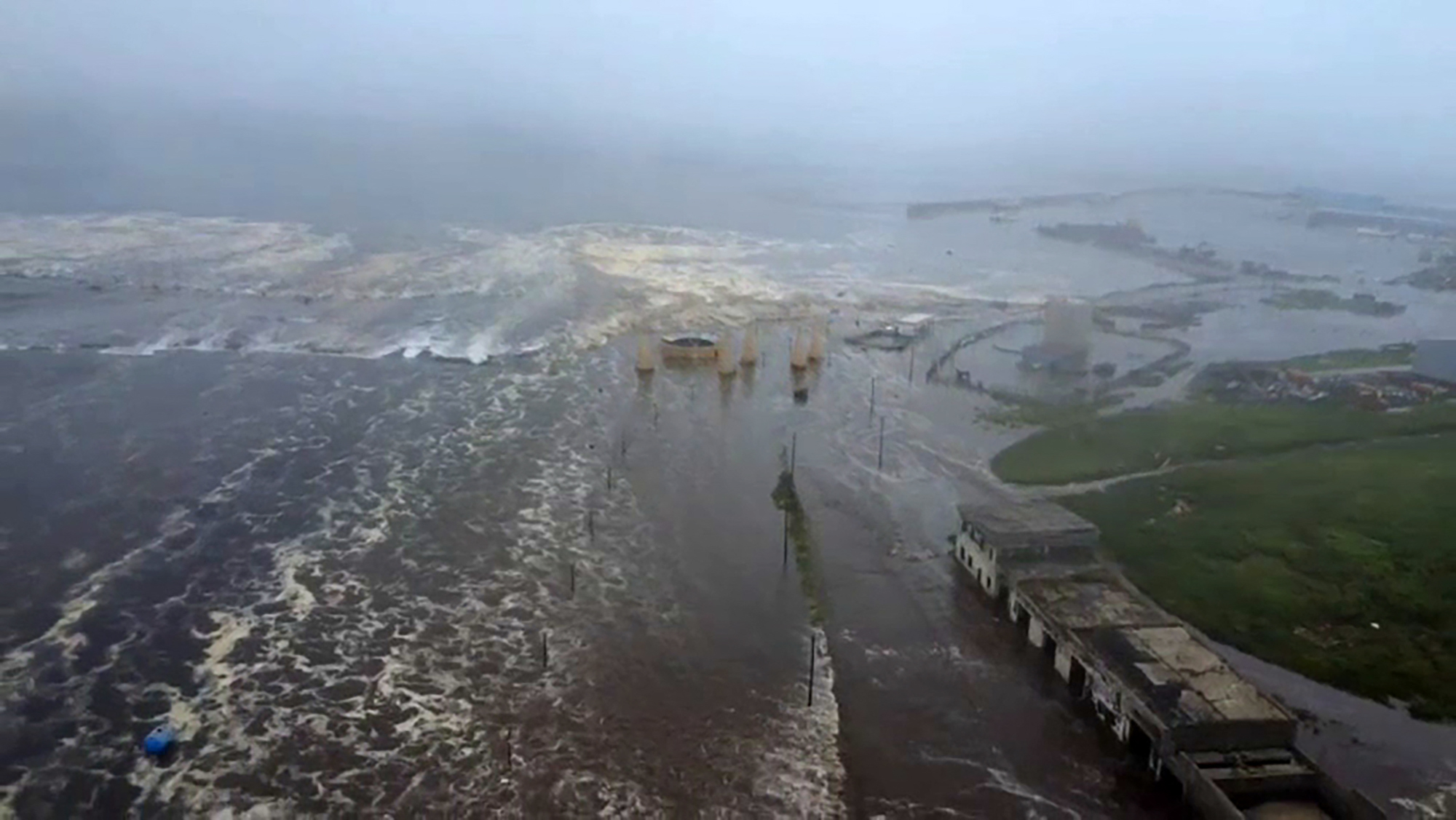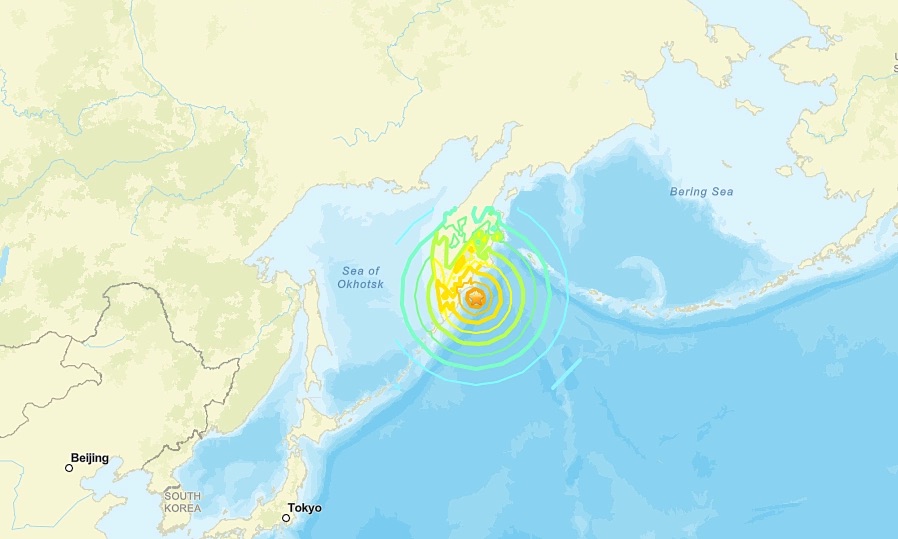Sergei Lebedev, head of the Kamchatka region's emergency response agency, announced this evening that the tsunami warning had been lifted after more than 11 hours. Warnings for Sakhalin Island and the town of Severo-Kurilsk in the Kuril Islands, in Russia's Far East, were also lifted.
Igor Medvedev, director of the tsunami research laboratory at the Shirshov Institute of Oceanology in Russia, said the tsunami following the 8.8 magnitude earthquake off Kamchatka reached 5-6 m. "This was a large tsunami," he said, adding that an earthquake of similar magnitude was unlikely to occur in the near future.
 |
A tsunami hits the town of Severo-Kurilsk in Russia on 30/7. Photo: AFP |
A tsunami hits the town of Severo-Kurilsk in Russia on 30/7. Photo: AFP
The Japan Meteorological Agency (JMA) also reported that all tsunami warnings had been lifted and downgraded to "advisories" for areas from Hokkaido to Okinawa.
"Warning" is the highest alert level, indicating a dangerous tsunami is occurring or imminent, potentially causing widespread flooding and strong currents. An "advisory" alerts people to strong currents or high waves that could be dangerous for those in the water or near the shore but are unlikely to cause widespread flooding.
The US National Weather Service also announced the lifting of the tsunami advisory for Guam and the Northern Mariana Islands. However, tsunami warnings remain in effect for the northern coasts of California and Oregon.
The Philippines and Micronesia also lifted their advisories after determining there was no longer a serious tsunami threat. "No major changes in sea level or tsunami waves have been recorded since the earthquake," the Philippine Institute of Volcanology and Seismology said.
Earlier, the institute had warned people to stay away from the coast and move further inland, due to fears of a tsunami hitting coastal areas.
 |
The epicenter of the earthquake off the coast of Russia's Far East on 30/7. Graphic: USGS |
The epicenter of the earthquake off the coast of Russia's Far East on 30/7. Graphic: USGS
Some countries, such as Colombia and Chile, are maintaining tsunami warnings for coastal areas, while Peru's National Emergency Operations Center estimated that waves higher than 2 m could hit the country's coast on 30/7.
The 8.8 magnitude earthquake occurred today with an epicenter 19 km below the seabed, about 136 km east of the city of Petropavlovsk on the Kamchatka Peninsula in Russia's Far East. The earthquake triggered tsunami warnings and evacuation orders in several countries.
The Geophysical Service of the Russian Academy of Sciences said it was the strongest earthquake in Kamchatka since 1952. The US Geological Survey (USGS) stated that the epicenter of the earthquake was similar to the 9.0 magnitude earthquake that triggered a devastating tsunami across the Pacific in 2011.
Thuy Lam (According to AFP, Reuters, CNN)












